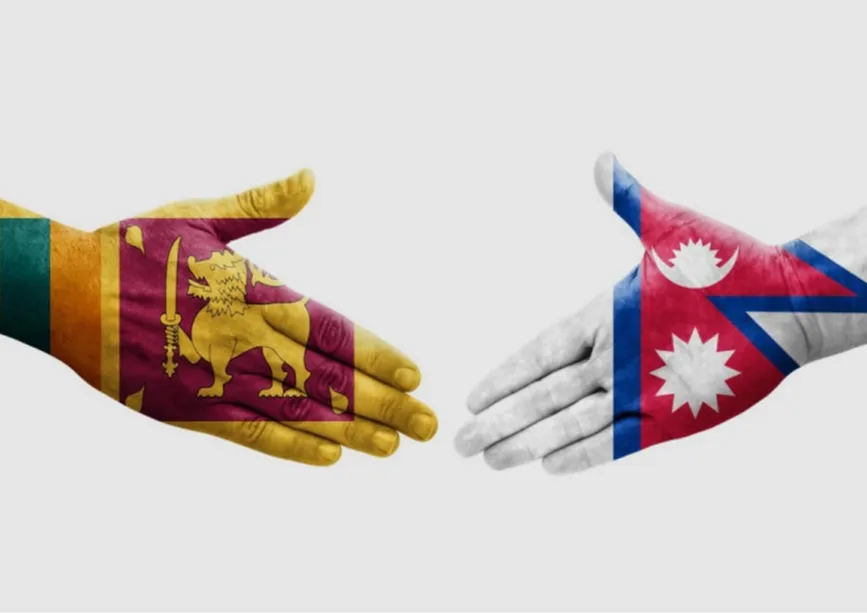-
CENTRES
Progammes & Centres
Location
The Nepal-India-Sri Lanka initiative could be used to pursue better people-to-people relations.

Speaking at the Raisina Dialogue on February 23, Nepal’s former Foreign Minister, NP Saud, hoped to revive the South Asian Association for Regional Organisation (SAARC). The development closely follows his meeting with Sri Lankan Foreign Minister Mohamed Uvais Mohamed Ali Sabry in December 2023, where both countries discussed the importance of reviving and strengthening regional organisations like SAARC and the Bay of Bengal Initiative for Multi-Sectoral Technical and Economic Cooperation (BIMSTEC).
Considering the ongoing competition between India and China and the unpredictability of the world order, it is understandable that South Asian countries are pushing for further regional cooperation. However, as the fate of these organisations is plagued with structural issues, the nudge seems to be going in the wrong direction. This calls for South Asian countries to embrace the trend of minilateralism to promote regional cooperation and collaborate with India on specific issues.
Considering the ongoing competition between India and China and the unpredictability of the world order, it is understandable that South Asian countries are pushing for further regional cooperation.
Since its origin in 1985, SAARC’s fate has largely depended on India-Pakistan relations. The organisation has been in a stupor following the Pakistan-sponsored Uri attack in 2016; the last summit was almost 10 years ago. The 2019 Balakot airstrikes and India’s abolition of Kashmir’s special status have only exacerbated these differences. India, today, does not see any incentive to reconcile with Pakistan as it confronts arising challenges like China and emerges as a major power in this evolving world order. New Delhi is also clear that “terror and talks cannot go hand in hand” while Pakistan’s new government continues to rake up the issue of Kashmir. Little seems to have changed in the region, and SAARC has continued to bear the brunt of Pakistan’s claims over Kashmir. Increasing tensions between Afghanistan and Pakistan and the Taliban’s return to power are only increasing the complexities of the already mouldering regional organisation.
BIMSTEC, another regional organisation deemed an alternative to SAARC, has also made no significant progress. Despite its recently increasing institutionalisation as the Bay of Bengal region grows in prominence. The organisation has had only five summits since its establishment in 1997. It has not been able to meet the expectations of intra-regional trade, and the fate of the FTA has lingered since the signing of the framework agreement in 2004. Similarly, BIMSTEC’s much anticipated Master Plan for Transport Connectivity is also witnessing hurdles as Myanmar—the link between South and Southeast Asia—is witnessing political and security turmoil. It is yet to be seen to what extent the organisation will serve its objective of fostering connectivity between South Asia and Southeast Asia and whether its members are willing to engage with Myanmar during the crisis.
BIMSTEC’s much anticipated Master Plan for Transport Connectivity is also witnessing hurdles as Myanmar—the link between South and Southeast Asia—is witnessing political and security turmoil.
Given the constraints with regional organisations, India, over the last decade, has invested in strengthening existing minilaterals and creating new ones. These minilaterals, composed of smaller groupings of like-minded partners, have helped India reach a quicker consensus and collaborate on specific issues. Some of these initiatives include the Colombo Security Conclave for maritime security in the Indian Ocean; India-France-Australia for maritime security and domain awareness; India-Australia-Indonesia for development assistance, and maritime issues and HADR; Australia-Japan-India for supply chain resilience and trade diversification; I2U2 for modernising infrastructure and advancing low-carbon pathways; and the QUAD which focuses on health and data sharing, climate resilience and maritime domain awareness.
In South Asia, too, India has preferred flexible cooperation with like-minded partners. It coordinates with countries like the United States and Russia to offer alternative development partnerships and promote critical infrastructure and investments in countries like Sri Lanka, Nepal and Bangladesh. India will also soon start facilitating energy trade between Nepal and Bangladesh.
Nonetheless, South Asian countries have been less enthusiastic about tapping into this minilateral and like-minded engagement momentum. They need to reverse this course to promote action-oriented regional cooperation with select and like-minded neighbours and have a better negotiating position against New Delhi, especially when regional organisations have become stale and are plagued with structural issues.
India has realised this well and is pushing for more minilaterals and flexible like-minded cooperation with select partners.
Countries like Nepal and Sri Lanka, which have advocated for regional organisation, should be forthcoming to promote a minilateral with India. For instance, the Nepal-India-Sri Lanka initiative could pursue better people-to-people relations, transport connectivity and cultural relations by tapping into their respective Ramayana and Buddhist circuits. These countries have already made some progress in this sector respectively. India has long discussed transnational Buddhist and Ramayana circuits with Nepal. In Sri Lanka too, there has been increasing interest in pushing for Ramayana and Buddhist circuits with India, especially following the economic crisis and the inauguration of the Ram Mandir. Recent discussions between Sri Lanka and Nepal have also reignited prospects of air connectivity between Lumbini and Colombo. The effectiveness of this trilateral cooperation could pave the way for more cooperation in sectors such as physical infrastructure, renewable energy, etc.
It is not to suggest that South Asian countries should do away with their regional ambitions and organisations; the geopolitical climate is not ripe for regional integration in South Asia. India has realised this well and is pushing for more minilaterals and flexible like-minded cooperation with select partners. On their part, South Asian countries should not hesitate to tap into this momentum. Countries like Sri Lanka and Nepal, which have been at the forefront of strengthening regional organisations, should promote minilateralism. These minilaterals will help South Asian countries push for regional cooperation and improve their negotiation and bargaining leverage vis-à-vis India, especially when regional organisations face challenges.
This commentary originally appeared in Kathmandu Post.
The views expressed above belong to the author(s). ORF research and analyses now available on Telegram! Click here to access our curated content — blogs, longforms and interviews.

Aditya Gowdara Shivamurthy is an Associate Fellow with the Strategic Studies Programme’s Neighbourhood Studies Initiative. He focuses on strategic and security-related developments in the South Asian ...
Read More +